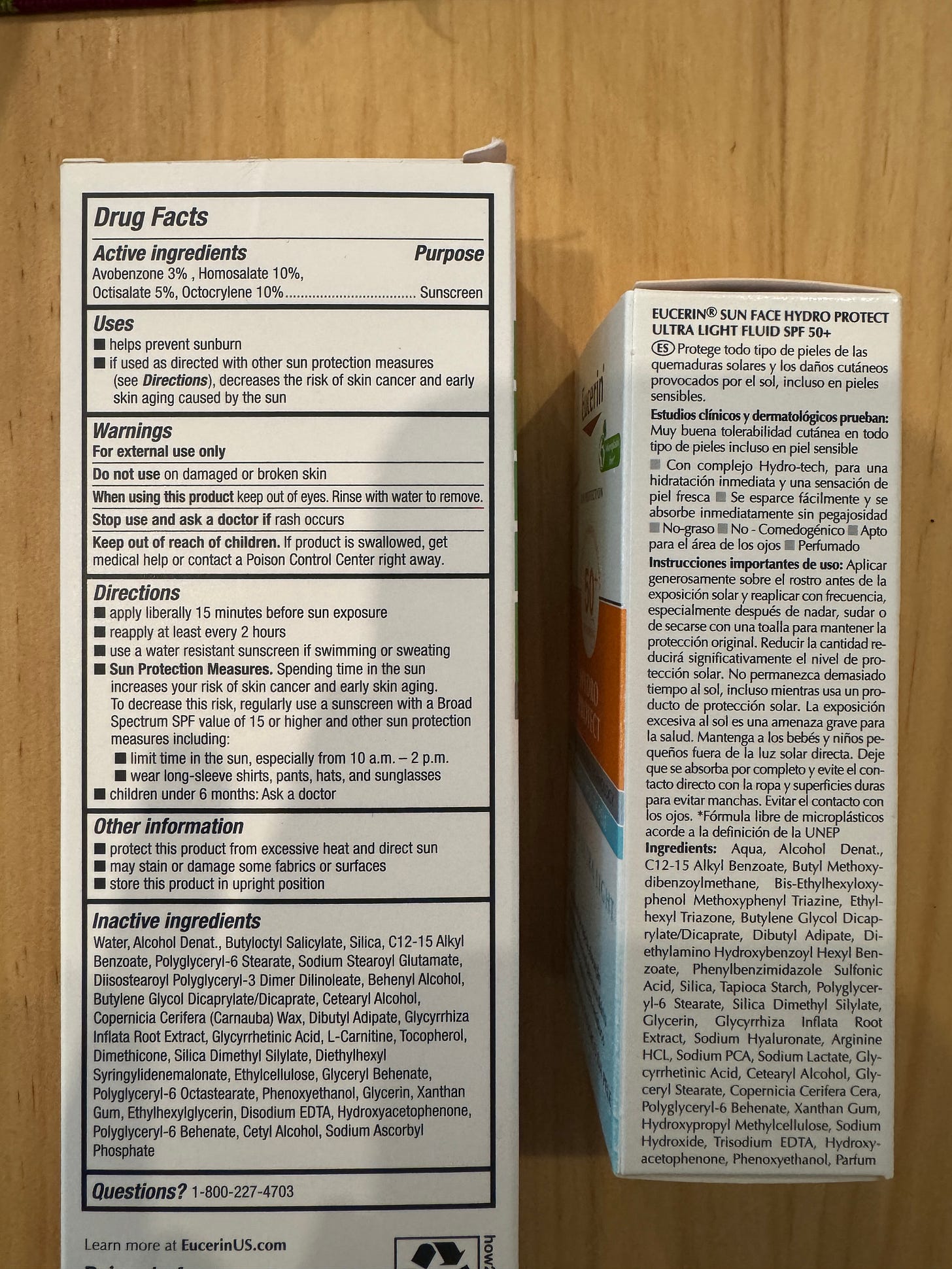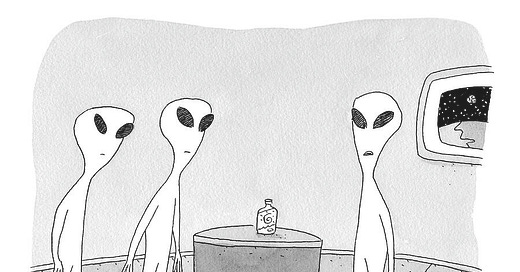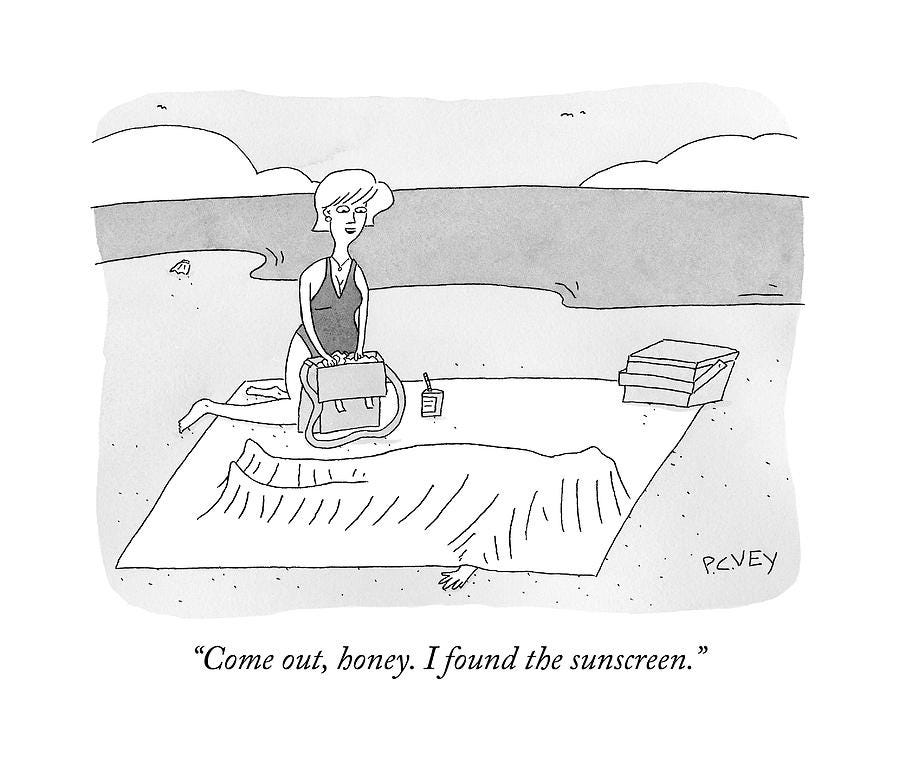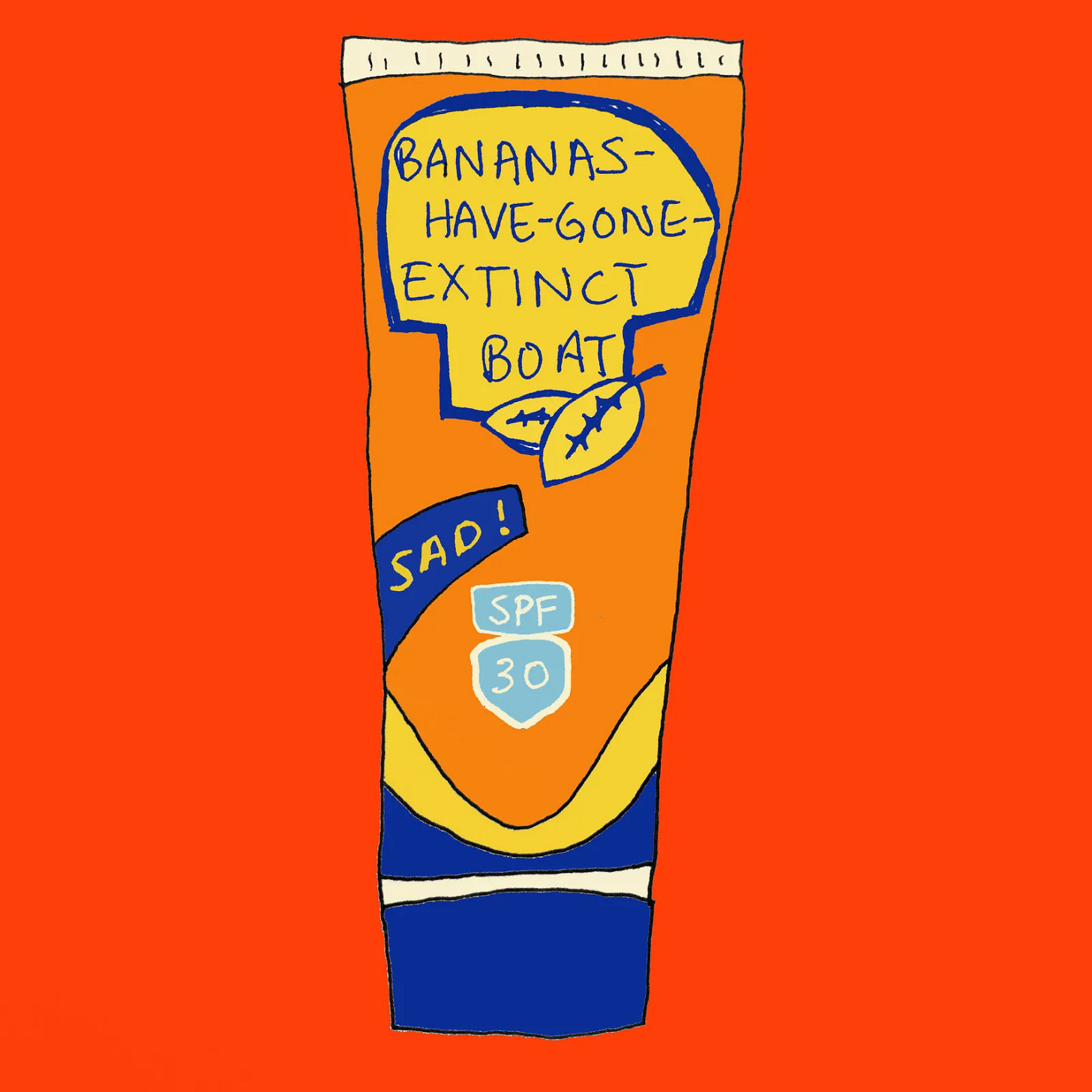Hello hello!
Summer Skin School is back in session and there’s no time to waste. Volume 2 covers a lot. This handbook is categorized by Big Ideas about sunscreen. Understanding these Big Ideas will help all the little-r ideas make sense. Read Volume 1 here.
Paid subs, look out for an email later today with info on Tuesday’s virtual live event!
Today’s Big Idea is Filters! Here’s what we’re covering:
SPF CLUB HANDBOOK TABLE OF CONTENTS
Filters
U.S. vs. Everywhere Else
Chemical vs. Mineral
Differences & Similarities
Approved Filters
Boosters
Myths & Misconceptions
Assessing Risk
Vitamin D, Endocrine Disruption & Reef Safe
The EWG
Coated vs. Uncoated Zinc Oxide
Using & Applying Sunscreen (up next!)
BIG IDEA: FILTERS
Understanding this big idea will help you understand what the actual differences are between types of sunscreen, why everyone says that the U.S. has worse sunscreen and how to properly interpret all of the scary things you hear about sunscreen.
The U.S. vs. Everywhere Else
Sunscreen filters are the specific ingredients that help prevent UV rays from entering your skin. They are what make sunscreen sunscreen!
You’ve likely heard people say that the United States has worse sunscreen than the rest of the world—it’s less cosmetically elegant, more likely to cause irritation and/or leave a white cast, offers less comprehensive protection etc. This is because of the filters that are approved in the US.
In the US, sunscreen is regulated as a drug, so the filters need to go through an extensive drug approval process, the same as with any other drug on the market. This is a rigorous process involving extensive tests (including animal testing) and millions and millions of dollars.
In the rest of the world, the governance of sunscreen is different, which is reflected in the approval process for new filters. Their standards and requirements for filters are actually much stricter, but approval is able to happen much faster, resulting in more modern filters that are not only more pleasant to use, but also offer superior protection.
The United States has not approved a new filter since 1999 and currently allows just 16, only 8 of which are commonly used these days. In comparison, the rest of the world has nearly 30 approved filters, including those used in the US. Here’s an article from NPR that discusses the current state of FDA approval and how one company has spent over $18 million dollars trying to get a new filter approved (literally just yesterday, the company announced that approval is back on track for 2026 🤞🤞🤞)
Since sunscreen is regulated as a drug in the US, all sunscreen in the US will have a drug facts label, with the percentages of active ingredients (filters) at the top. The rest of the ingredients will be listed at the bottom, just like any other skincare product. They’re categorized as “inactive” because they are not active drug ingredients, but that doesn’t mean they don’t do anything. In the rest of the world, the filters will just be included in the ingredients list. In the US, you’ll see the filter listed as its common trade name (ex: avobenzone) but everywhere else the filter is listed as the chemical name and takes some detective work (ex: Bis-ethylhexyloxyphenol methoxyphenyl triazine).

Because light and heat can degrade active ingredients, the filters need to be stabilized so they don’t degrade or break down in the sun, which would impact the efficacy and lower your protection. If a filter is photostable, that means it doesn’t degrade in sunlight, offering consistent levels of protection. Some filters are photostable on their own, while others need to be stabilized by other filters or inactive ingredients. Mineral filters and the newer chemical UV filters are all photostable (just another benefit of them!), but only some of the US-approved filters are photostable.
CHEMICAL VS. MINERAL
Chemical and mineral are the 2 categories of sunscreen filters. One of the most pervasive sunscreen myths is that chemical filters absorb UV rays and mineral filters reflect or scatter UV rays. This is inaccurate!
The truth is that chemical and mineral filters work almost the exact same way, by absorbing UV rays and converting them into small amounts of heat. Mineral filters differ slightly, with just 5-10% of the UV rays being scattered or reflected, but the remaining 90-95% is absorbed and converted into heat, just like chemical filters. It is actually illegal to call a product “sun block” because that gives the false impression that it is blocking UV rays!
Chemical (aka organic)
Work by absorbing UV rays and converting them into small amounts of heat.
Tend to be lighter, easier to absorb and less likely to leave a white cast.
More likely to cause eye stinging/general irritation, particularly US-approved chemical filters.
Formulas usually include more than one chemical filter to offer broad-spectrum UVA and UVB protection.
Newer filters are more photostable and able to offer consistent levels of protection in sunlight.
Mineral (aka inorganic)
Solid particles of zinc oxide or titanium dioxide, which are the only 2 types of mineral filters that exist.
Work by absorbing 90-95% of UV rays and reflecting/scattering the remaining 5-10%.
Zinc oxide protects against the full UVB and UVA spectrum, while titanium dioxide covers all UVB and part of the UVA spectrum.
Tend to be thicker and more drying, but less irritating for sensitive skin and eyes.
Literal white powders, so they will always leave white casts on darker skin tones to varying degrees. Tinted mineral sunscreens can help to mitigate this to an extent, as can chemical boosters.
There are also hybrid sunscreens, which contain both mineral and chemical filters.
Below is a summary of the most commonly used filters in the US, as well as some of the more popular ones in the rest of the world. You’ll notice that each filter differs in the wavelength(s) they protect against and there’s a lot of variability with UVA1 and UVA2 protection. Modern filters have much better UVA protection than those used in the US.
MINERAL/INORGANIC
Zinc oxide – UVB, UVA1, UVA2 (the only full spectrum mineral filter)
Titanium dioxide – UVB, UVA2
CHEMICAL/ORGANIC (APPROVED IN US/GLOBALLY)
Octocrylene – UVB, UVA2
Octinoxate – UVB
Octisalate – UVB
Oxybenzone – UVB, UVA2
Homosalate – UVB
Avobenzone – UVA1 (the only US-approved chemical filter that protects against UVA1)
CHEMICAL/ORGANIC (NOT APPROVED IN US)
Tinosorb S, Bemotrizinol (Bis-ethylhexyloxyphenol methoxyphenyl triazine) – UVB, UVA1, UVA2 (this is the one on track for US approval)
Tinosorb M (Methylene bis-benzotriazolyl tetramethylbutyl-phenol) – UVB, UVA1, UVA2
Uvinul T 150, Octyltriazone (ethylhexyl triazone) – UVB
Uvinul A Plus (diethylamino hydroxybenzoyl hexyl benzoate) – UVA1, UVA2
Mexoryl XL and Mexoryl SX (Drometrizole trisiloxane and Ecamsule) – UVA2 (XL), UVA1 (when used together, they work synergistically). Fun fact, these 2 were developed and patented by L’Oreal, so they’re used in their brands, like La Roche-Posay.
Boosters
This mind-blowing loophole is one of my favorite things to teach people about. Boosters are added ingredients that help to improve SPF performance and stability—they can make a formula more cosmetically elegant and easier to spread or “boost” the UVB/UVA protection level, which is one way to make mineral sunscreen more pleasant to use and less casty. All sounds good, but…
These boosters are essentially identical to some approved chemical sunscreen filters! And they work the exact same way, by absorbing UV and converting it into heat. But since they are not registered FDA-approved sunscreen filters, a brand can just list them as part of the inactive ingredient list and continue to claim that their product is “100% mineral.” Brands can continue to demonize chemical sunscreen, while still using an ingredient that is functionally the same as the chemical filters they’re trying to scare you about.
The most common booster used is butyloctyl salicylate, which is nearly identical and in terms of UV protection, functionally the same, as octisalate. If you use a mineral sunscreen and go “wow, that’s actually pretty good and doesn’t feel at all like a mineral sunscreen and doesn’t really leave any white cast,” I can almost guarantee you will find butyloctyl salicylate–or another common one, tridecyl salicylate–near the top of the ingredient list. (You can read more & see the other ones here.)
FWIW, the only US brand I’ve ever seen explicitly call this out in their formula is Prequel.
Myths & Misconceptions
So much of what I’ve learned about sunscreen is from Dr. Michelle Wong, Chemistry PhD and cosmetic chemist aka Lab Muffin. In my opinion, she’s probably the best source out there for debunking sunscreen myths and I think her dearly. I linked to her extensive research throughout for the nerds who want to dive in..
Understanding Risk & Assessing Safety
Obviously what we put on our bodies is of great concern, but sunscreen ingredients are some of the most scrutinized ingredients, with robust safety data, testing requirements and regulations. (If that weren’t the case, it would be a lot easier to get modern filters approved in the states!) I also think it’s worth remembering that it is universally accepted that there is a giant carcinogen in the sky. Be worried about that! I love this 101 explainer on ingredient safety.
A lot of the myths and misinformation stems from the “clean beauty” movement, which has fear mongered perfectly safe ingredients based on cherry picked data and incomplete interpretations of studies. Brands and organizations use this information to convince consumers to buy certain products over others. They get away with it by appealing to emotions and assuming you won’t look at the research, which most people wouldn’t be able to properly interpret anyway (not even me!) The truth is, when you take a step back and listen to scientists with relevant expertise, many of the widespread fears about sunscreen are unfounded.
Humans have a negativity bias–we react more to negative information and events, which plays out everyday in the news and on social media. Negative, scary and sensationalized stories cause an emotional response that equals more clicks and headlines. Similarly to planes and cars, they only make headlines when something bad happens. We don’t hear about the thousands of flights that safely make it to their destinations everyday just like we don’t read about all of the research confirming ingredient safety.
When it comes to understanding risk and debunking myths, here are the big picture things to understand:
The dose makes the poison. A key principle in toxicology. The amount is what makes something toxic and everything can be toxic at a certain dose. Taking 2 Advil pills is not poisonous, but ingesting half the bottle is. Even water can be toxic—too much and you will drown!
Absorption does not equal risk. This comes straight from the FDA! Even if a chemical is found in the bloodstream, that does not automatically make it dangerous to your health. (Here’s another video from Dr. Kibbelaar, who has a PhD in complex fluids and I promise knows more about this than you.)
The source of exposure matters. Applying things topically is different from ingesting them, which is different from injecting them etc.
Studies don’t always paint a full picture for humans. Many of the studies that are cited as proof of dangerous ingredients are conducted using doses and exposure types that are not representative of daily human use. They’re also often done on cells or non-human animals, like mice, which can provide helpful information, but cannot accurately represent what happens in humans.
Vitamin D, Endocrine Disruption, Reef Safe
With that in mind, let’s go over 3 common myths and misconceptions. We already covered the myth about how mineral vs. chemical sunscreen filters work above.
Sunscreen & Vitamin D Deficiency
Covered extensively in this post, the tl;dr is the evidence does not support the claim that sunscreen use leads to vitamin D deficiency or that vitamin D is superior when absorbed through the skin over supplements or fortified foods. It’s all biologically inactive until it gets to your kidneys and liver, which don’t know the difference, they just want vitamin D.
Endocrine/Hormone Disruption
Yes, there is evidence that some chemical filters (mostly oxybenzone) get absorbed into the bloodstream in trace amounts, but crucially, that does not inherently mean there is risk to your health. Just because something is present does not mean it is hazardous. Our bodies are famously good at filtering out waste! There is no evidence that the amount of sunscreen used by humans is anywhere close to the amount that would cause endocrine disruption. Studies that have demonstrated endocrine disruption use much higher doses and are not conducted on humans. And the human trial data isn’t actually that significant if you really look at it. (More info here and here.) Plus, if you really think about it, these ingredients have been used and studied for over 40 years. If there was that big of a risk to human health, we would have robust evidence and they would not be approved for use. This post is an excellent, easy to understand explainer on this issue.
Reef Safe
This belief is so pervasive that it has influenced government policy, but the evidence linking chemical sunscreen filters and coral bleaching is not so convincing and was conducted in unrealistic settings. This widespread claim was based on one 2016 study that has since been criticized for its poor quality and is an outlier among all of related research on sunscreen with coral bleaching (great quick video from a cosmetic scientist). In fact, zinc oxide might even be more of an issue (and if used in the same way as the 2016 study, would also show coral bleaching). There’s a lot more here, so once again, I refer you to Labmuffin’s explanation. The real culprit? Climate change.
The EWG
The EWG is a lobbying group, funded by contributions and brands that pay for “EWG certification.” It is not a group run by scientists with relevant expertise and not a reliable source of information on ingredient safety. Among other issues, their lists do not take into account dose or exposure. Reputable, relevant scientific communities (ex. The Skin Cancer Foundation, the American Academy of Dermatology) have repeatedly discredited their claims. (More info here and here.)
Similarly, ingredient rating apps are not valid sources. Apps like the Yuka App are wildly inaccurate and not evidence based. It rates ingredients without taking into account dose or exposure, equating the mere presence of something as dangerous. Here’s an explanation from a toxicologist.
Coated vs. Uncoated Zinc Oxide
This isn’t necessarily a myth, but has been a source of a lot of confusion recently. The concerns are over the effectiveness of coated vs. uncoated zinc oxide when used in conjunction with chemical sunscreen filters.
Coated zinc oxide is coated in an inert, non-reactive substance, like silicones or silica, which makes it easier to formulate with, less reactive and more stable. Uncoated zinc oxide is more reactive and unstable and rarely used in sunscreen until recently, due to the “natural/clean” beauty movement demonizing synthetic, convincing many brands to start using uncoated zinc oxide in their formulas. Uncoated zinc oxide has the potential to destabilize some chemical sunscreen filters, particularly avobenzone. (Nitty gritty science here.)
People, like myself, will often use a tinted mineral sunscreen on top of their chemical sunscreen. This is because you’ll usually look insane if you use the proper amount (¼ teaspoon) of a tinted product, so it’s better to treat it like makeup (more on this next week!) If you’re doing this and the mineral sunscreen uses uncoated zinc oxide, it may react with your chemical sunscreen and render your protection ineffective. The jury is still out on how significant this risk is and which chemical filters uncoated zinc oxide can interact with, but it’s still good to be cautious.
So, for now, what this means in practice:
See if a brand states if they use coated or uncoated zinc in their formulas. If you can’t find that info, send them an email. It’s impossible to know for sure by looking at an ingredients list, but silicones or silica in the formula is a good clue.
If a brand uses uncoated zinc oxide, avoid layering it over any chemical sunscreen.
If a brand uses coated zinc oxide, it’s okay to use over chemical sunscreen (just wait 10-15 minutes for the chemical sunscreen to set before applying mineral on top).
To ease your minds, here’s what I know:
Tower28 FaceGuard uses coated zinc oxide in their newest mineral formula
Ciele uses coated zinc oxide in all of their formulas
Naked Sundays BeautyScreen (what I use) uses coated zinc oxide, but the rest of their mineral products use uncoated
Merit The Uniform, their new mineral sunscreen, uses uncoated zinc oxide, so don’t layer it, though I’ve heard that you can use a full ¼ application and it doesn’t look crazy
WHEW. Thank you for reading, I hope you learned a lot. Take the weekend to let it sink in.
xx,
Jolie
Today’s post is part of Hotline Skin’s Summer Skin School! Get caught up with the rest of class! Learn what bananas and the sun have in common, discover a new summer skincare savior or learn a bit of physics.
This series, like almost all of my content, is free! To support my work, consider becoming a paid subscriber. You’ll get access to weekly Office Hours, monthly giveaways and other perks. Not ready to subscribe but want to show appreciation for this post? Buy Me A Coffee!
Office Hours Reminder
Join us for Office Hours on Sunday! This exclusive weekly opportunity is available to paying subscribers.
Every Sunday at 5pm EST, I’ll begin a new thread for the week in Substack Chat, where you can ask me anything. Every Monday from 5-6pm EST, I’ll be in that chat live, answering questions for the hour. That way, if you can’t make it, you can submit any time after 5pm Sunday and still get an answer. If you can make it live, join in! You can ask questions in real time and (hopefully) interact with others in class ;)









What a great resource for everyone! I didn’t know about zinc oxide being coated or uncoated. I emailed Ultraviolette because I use Lean Screen over chemical sunscreen and they confirmed that they use coated zinc in that product at least. They also responded to me in less than an hour, which is wild. Anyway, thanks for this. I’m recovering from the clean beauty cult and having some of those myths that I believed get busted is really helpful.
What a great read! Can you layer uncoated zinc oxide over a mineral sunscreen?